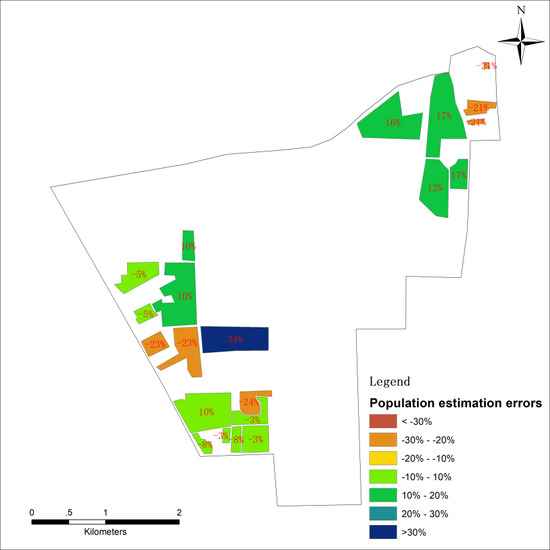Mapping Fine-Scale Urban Spatial Population Distribution Based on High-Resolution Stereo Pair Images, Points of Interest, and Land Cover Data
Abstract
:1. Introduction
2. Materials and Methods
2.1. Study Area
2.2. Data
2.3. Extraction of Residential Buildings
2.4. Estimation of Building Height
2.5. Population Modeling
2.6. Validation
3. Results
4. Discussion
5. Conclusions
Author Contributions
Funding
Acknowledgments
Conflicts of Interest
References
- Ural, S.; Hussain, E.; Shan, J. Building population mapping with aerial imagery and GIS data. Int. J. Appl. Earth Obs. Geoinf. 2011, 13, 841–852. [Google Scholar] [CrossRef]
- Martin, D. Directions in population GIS. Geogr. Compass 2011, 5, 655–665. [Google Scholar] [CrossRef]
- Jia, P.; Qiu, Y.; Gaughan, A.E. A fine-scale spatial population distribution on the high-resolution gridded population surface in Alachua County, Florida. Appl. Geogr. 2014, 50, 99–107. [Google Scholar] [CrossRef]
- Chakraborty, J.; Tobin, G.A.; Montz, B.E. Population evacuation: Assessingspatial variability in geophysical risk and social vulnerability to natural hazards. Nat. Hazards Rev. 2005, 6, 23–33. [Google Scholar] [CrossRef]
- Pal, A.; Graettinger, A.J.; Triche, M.H. Emergency evacuation modelingbased on geographical information system data. In Proceedings of the 2003 TRB Annual Meeting, Washington, DC, USA, 12–16 January 2003. [Google Scholar]
- Jia, P. Developing a flow-based spatial algorithm to delineate hospital service areas. Appl. Geogr. 2016, 75, 137–143. [Google Scholar] [CrossRef]
- Maantay, J.A.; Maroko, A.R.; Herrmann, C. Mapping population distribution in the urban environment: The cadastral-based expert dasymetric system(CEDS). Cartogr. Geogr. Inf. Sci. 2007, 34, 77–102. [Google Scholar] [CrossRef]
- Luo, W.; Wang, F. Measures of Spatial Accessibility to Health Care in a GIS Environment: Synthesis and a Case Study in the Chicago Region. Environ. Plan. B Plan. Des. 2003, 30, 865–884. [Google Scholar] [CrossRef] [Green Version]
- Tayman, J.; Pol, L. Retail site selection and Geographic Information Systems. J. Appl. Bus. Res. (JABR) 2011, 11, 46. [Google Scholar] [CrossRef]
- Krunic, N.; Bajat, B.; Kilibarda, M.; Tosic, D. Modelling the spatial distribution of Vojvodina’s population by using dasymetric method. Spatium 2011, 24, 45–50. [Google Scholar] [CrossRef]
- Langford, M. Rapid facilitation of dasymetric-based population interpolation by means of raster pixel maps. Comput. Environ. Urban Syst. 2007, 31, 19–32. [Google Scholar] [CrossRef]
- Lin, J.; Cromley, R.; Zhang, C. Using geographically weighted regression to solve the areal interpolation problem. Ann. GIS 2011, 17, 1–14. [Google Scholar] [CrossRef]
- Saporito, S.; Chavers, J.M.; Nixon, L.C.; McQuiddy, M.R. From here to there: Methods of allocating data between census geography and socially meaningful areas. Soc. Sci. Res. 2007, 36, 897–920. [Google Scholar] [CrossRef]
- Mennis, J. Dasymetric Mapping for Estimating Population in Small Areas. Geogr. Compass 2009, 3, 727–745. [Google Scholar] [CrossRef]
- Bhaduri, B.; Bright, E.; Coleman, P.; Urban, M.L. LandScan USA: A high-resolution geospatial and temporal modeling approach for population distribution and dynamics. GeoJournal 2007, 69, 103–117. [Google Scholar] [CrossRef]
- Jia, P.; Gaughan, A.E. Dasymetric modeling: A hybrid approach using land cover and tax parcel data for mapping population in Alachua County, Florida. Appl. Geogr. 2016, 66, 100–108. [Google Scholar] [CrossRef]
- Lwin, K.; Murayama, Y. A GIS estimation of building population for micro-spatial analysis. Trans. GIS 2009, 13, 401–404. [Google Scholar] [CrossRef]
- Lu, Z.; Im, J.; Quackenbush, L.; Halligan, K. Population estimation based on multi-sensor data fusion. Int. J. Remote Sens. 2010, 31, 5587–5604. [Google Scholar] [CrossRef]
- Lung, T.; Lübker, T.; Ngochoch, J.K.; Schaab, G. Human population distribution modelling at regional level using very high resolution satellite imagery. Appl. Geogr. 2013, 41, 36–45. [Google Scholar] [CrossRef]
- National Geomatics Center of China. Available online: http://ngcc.sbsm.gov.cn/ (accessed on 12 May 2016).
- Xu, K.; Jiang, Y.H.; Zhang, G.; Zhang, Q.J.; Wang, X. Geometric potential assessment for ZY3-02 triple linear array imagery. Remote Sens. 2017, 9, 658. [Google Scholar] [CrossRef] [Green Version]
- Geographical Information Monitoring Cloud Platform. Available online: http://www.dsac.cn/DataProduct (accessed on 14 July 2016).
- Homelink. Available online: http://bj.lianjia.com/ (accessed on 29 December 2015).
- Baidu Map. Available online: http://map.baidu.com/ (accessed on 24 February 2016).
- Jun, C.; Ban, Y.; Li, S. Open access to Earth land-cover map. Nature 2014, 514, 434. [Google Scholar] [CrossRef] [Green Version]
- Im, J.; Jensen, J.R.; Tullis, J.A. Object-based change detection using correlation image analysis and image segmentation. Int. J. Remote Sens. 2008, 29, 399–423. [Google Scholar] [CrossRef]
- Smith, G.M.; Fuller, R.M. An integrated approach to land cover classification: An example in the Island of Jersey. Int. J. Remote Sens. 2001, 22, 3123–3142. [Google Scholar] [CrossRef]
- Stow, D.; López, A.; Lippitt, C.; Hinton, S.; Weeks, J. Object-based classification of residential land use within Accra, Ghana based on QuickBird satellite data. Int. J. Remote Sens. 2007, 28, 5167–5173. [Google Scholar] [CrossRef] [PubMed]
- Ni, W.; Sun, G.; Ranson, K.J.; Pang, Y.; Zhang, Z.; Yao, W. Extraction of ground surface elevation from ZY-3 winter stereo imagery over deciduous forested areas. Remote. Sens. Environ. 2015, 159, 194–202. [Google Scholar] [CrossRef]
- Chen, F.; Thiel, K.H. Delimiting the building heights in city from the shadow in Panchromatic SPOT-image-Part 1. Test of Forty-two buildings. Remote Sens. 1995, 16, 409–415. [Google Scholar] [CrossRef]
- Tupin, F. Merging of SAR and optical features for 3D reconstruction in a radar grammetric framework. In Proceedings of the IEEE International Geoscience and Remote Sensing Symposium, Anchorage, AK, USA, 20–24 September 2004; pp. 395–398. [Google Scholar]
- Awrangjeb, M.; Ravanbakhsh, M. Automatic detection of residential buildings using LiDAR data and multispectral imagery. ISPRS-J. Photogramm. Remote Sens. 2010, 65, 457–467. [Google Scholar] [CrossRef] [Green Version]
- Dong, P.; Ramesh, S.; Nepali, A. Evaluation of small-area population estimation using LiDAR, Landsat TM and parcel data. Int. J. Remote Sens. 2010, 31, 5571–5586. [Google Scholar] [CrossRef]
- Baillard, C.; Maitre, H. 3D reconstruction of urban scenes from aerial stereo imagery: A focus of strategy. Comput. Vis. Image Underst. 1999, 76, 244–258. [Google Scholar] [CrossRef] [Green Version]
- Deville, P.; Linard, C.; Martin, S.; Gilbert, M.; Stevens, F.R.; Gaughan, A.E.; Blondel, V.D.; Tatem, A.J. Dynamic population mapping using mobile phone data. Proc. Natl. Acad. Sci. USA 2014, 111, 15888. [Google Scholar] [CrossRef] [Green Version]
- Stevens, F.R.; Gaughan, A.E.; Linard, C.; Tatem, A.J. Disaggregating census data for population mapping using random forests with remotely-sensed and ancillary data. PLoS ONE 2015, 10, e0107042. [Google Scholar] [CrossRef] [Green Version]
- Patel, N.N.; Stevens, F.R.; Huang, Z.; Gaughan, A.E.; Elyazar, I.; Tatem, A.J. Improving large area population mapping using Geotweet densities. Trans. GIS 2016, 21, 317–331. [Google Scholar] [CrossRef] [PubMed]
- Yang, X.; Ye, T.; Zhao, N.; Chen, Q.; Yue, W.; Qi, J.; Zeng, B.; Jia, P. Population mapping with multisensor remote sensing images and Point-of-Interest data. Remote Sens. 2019, 11, 574. [Google Scholar] [CrossRef] [Green Version]
- Jia, P.; Xue, H.; Liu, S.; Wang, H.; Yang, L.; Hesketh, T.; Ma, L.; Cai, H.; Liu, X.; Wang, Y.; et al. Opportunities and challenges of using big data for global health. Sci. Bull. 2019, 64, 1652–1654. [Google Scholar] [CrossRef] [Green Version]
- Facebook Connectivity Lab and Center for International Earth Science Information Network—CIESIN—Columbia University. Available online: https://www.ciesin.columbia.edu/data/hrsl/ (accessed on 21 January 2020).
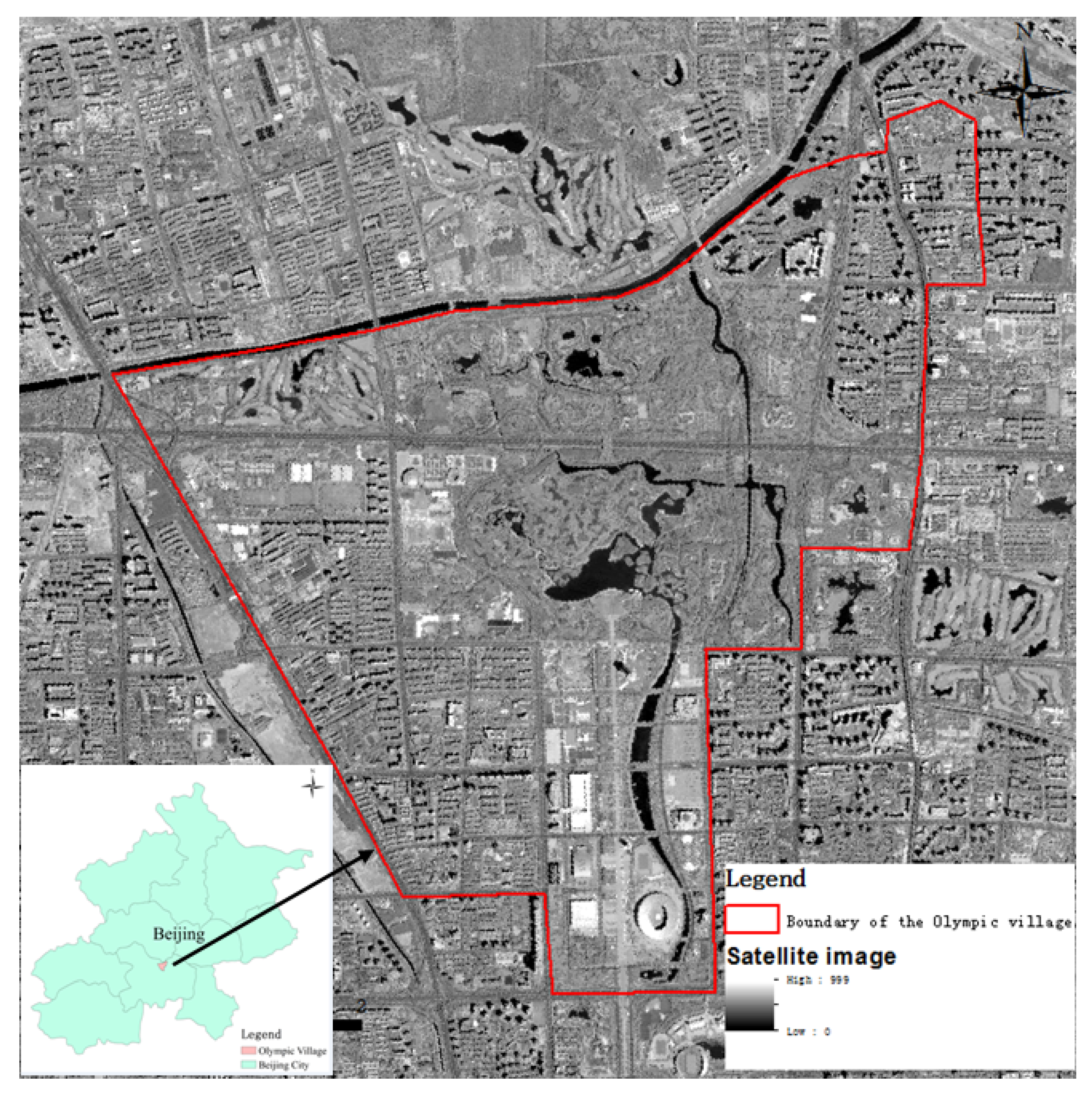
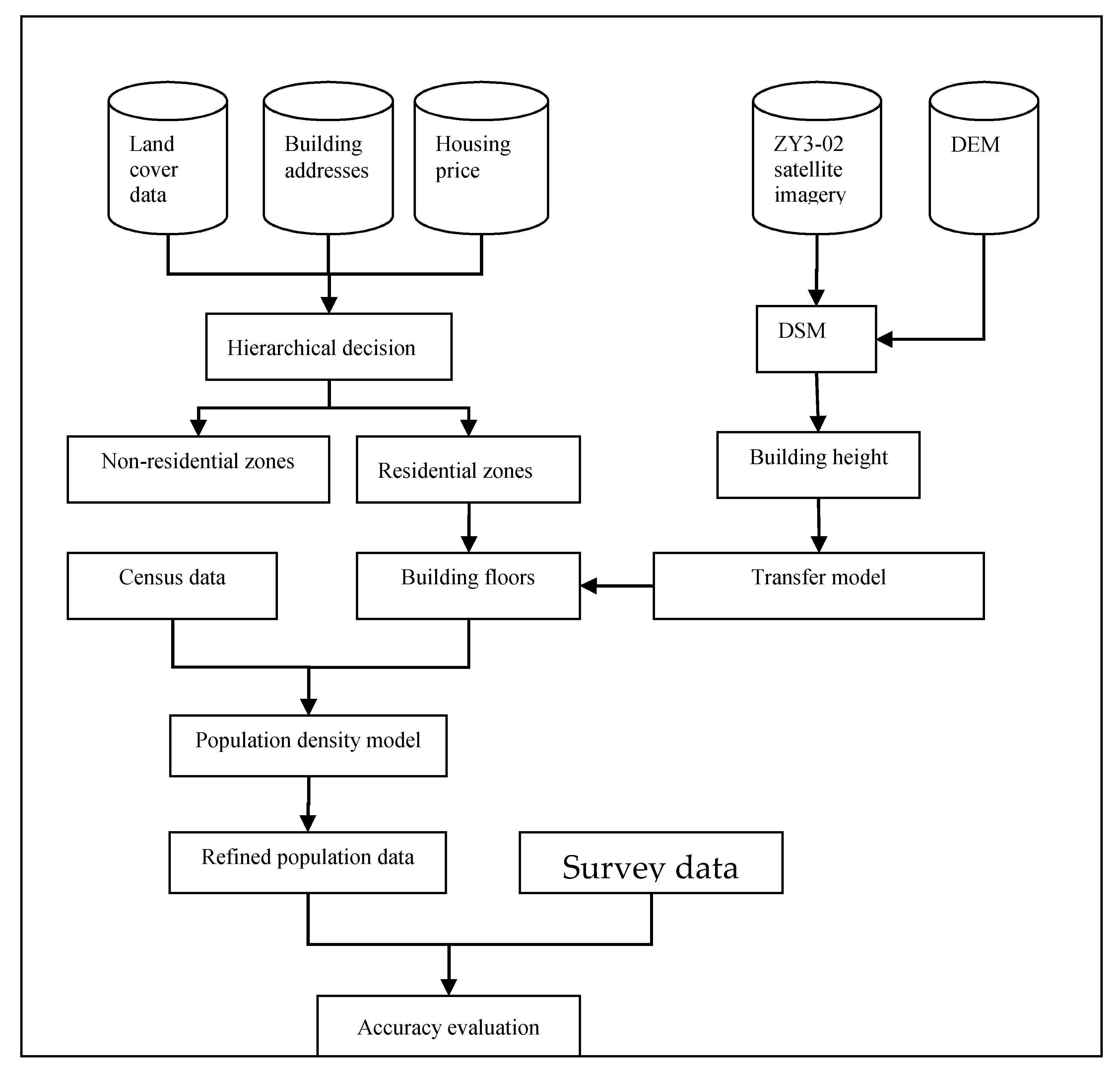
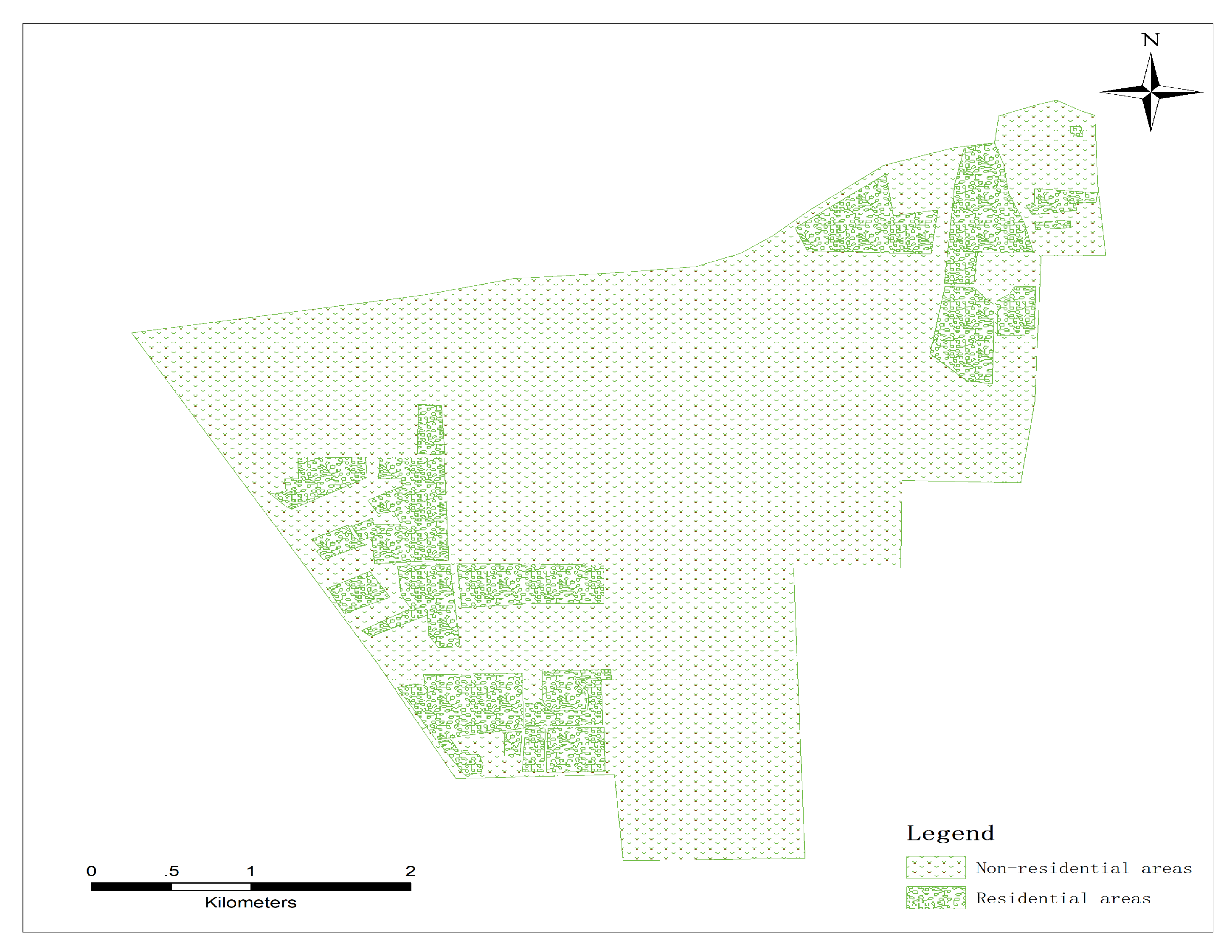
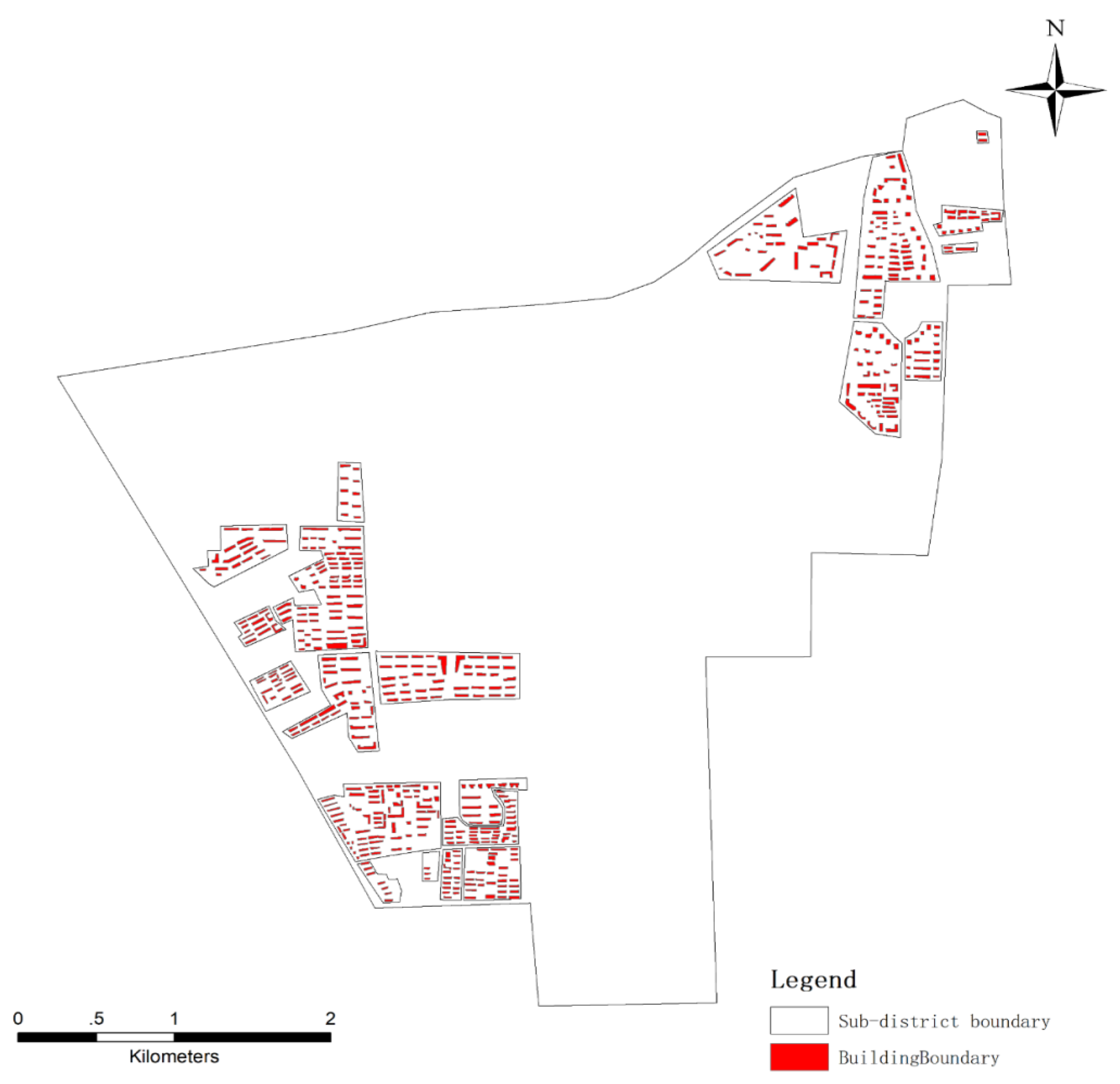
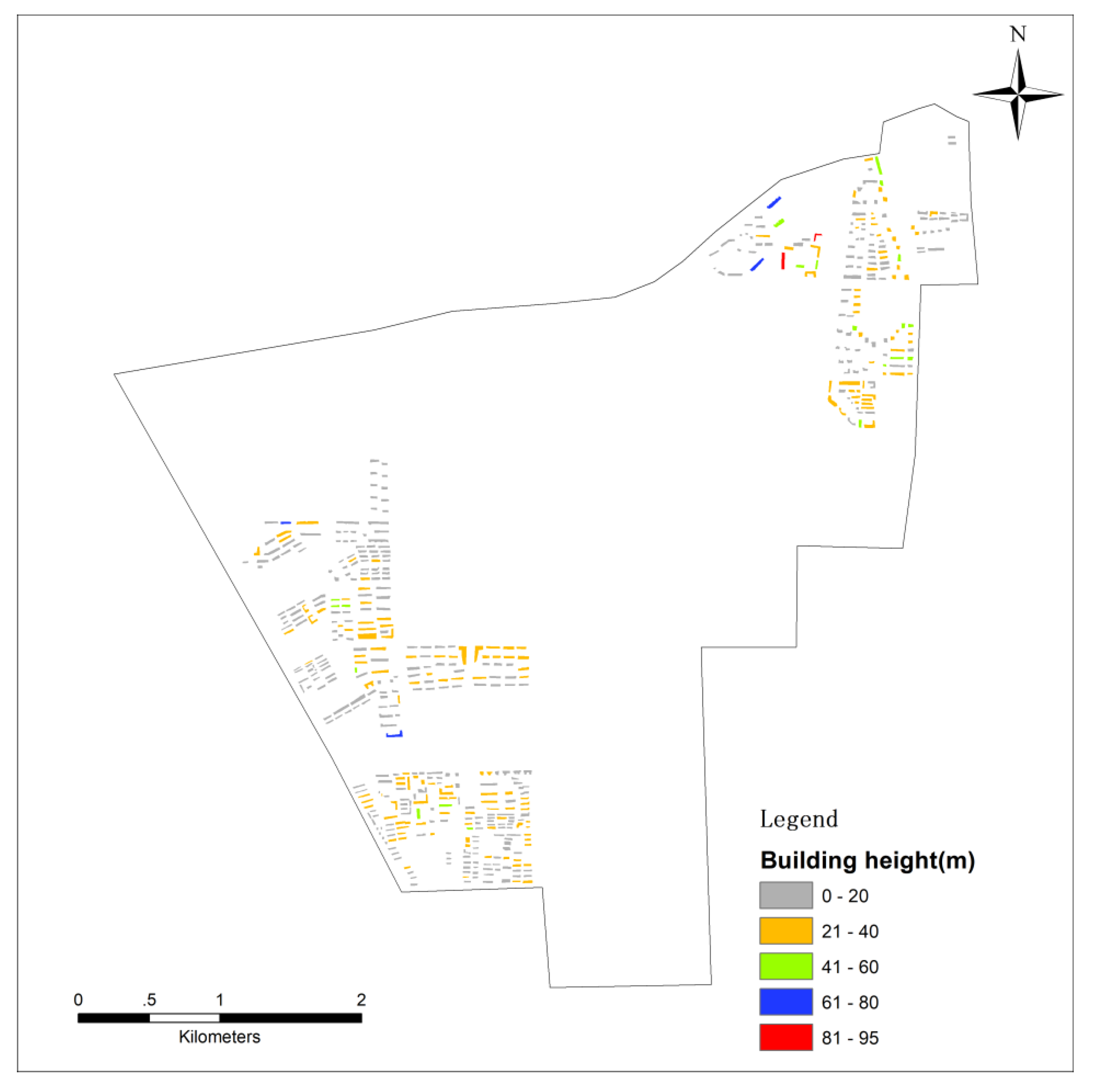
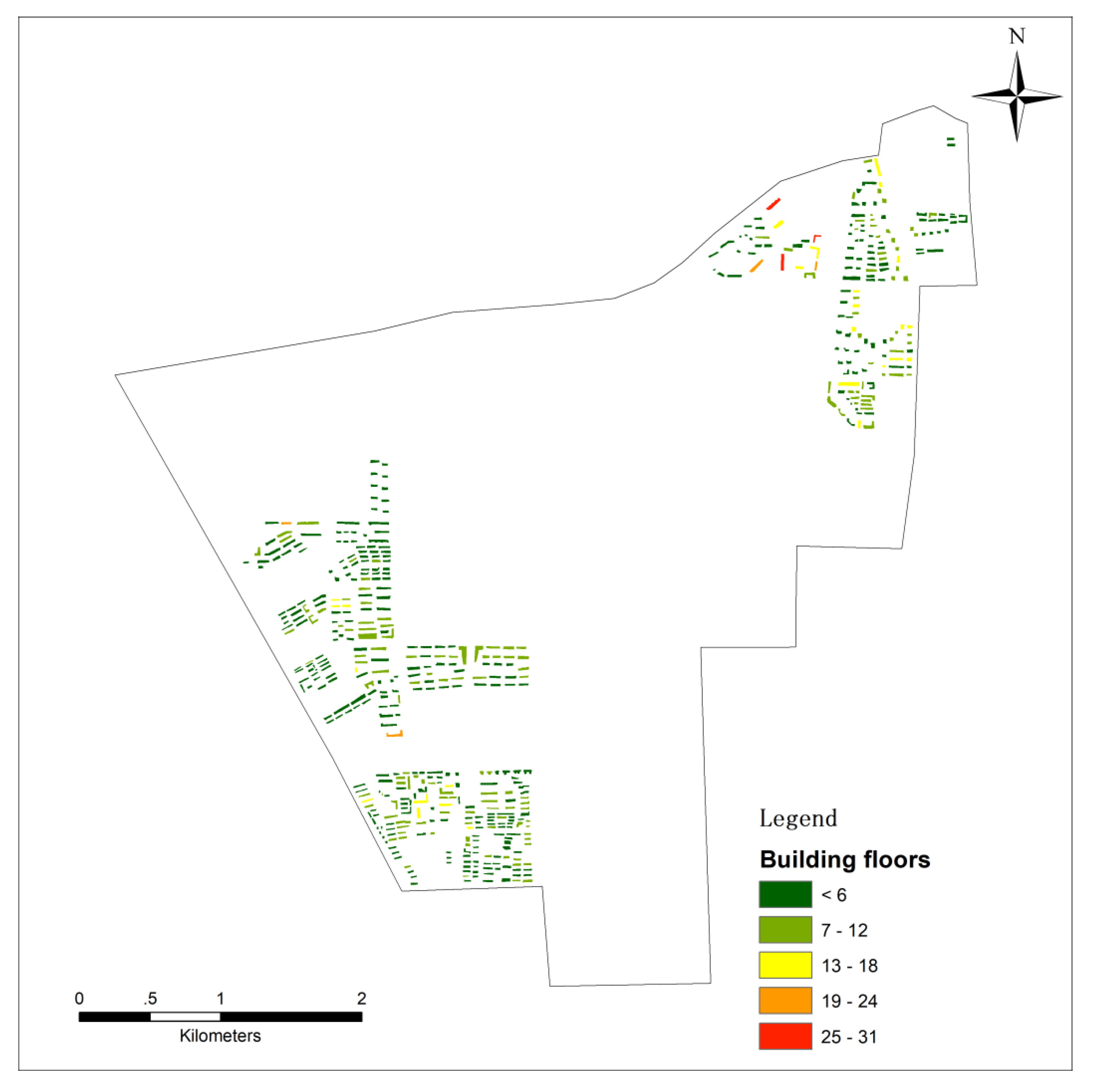
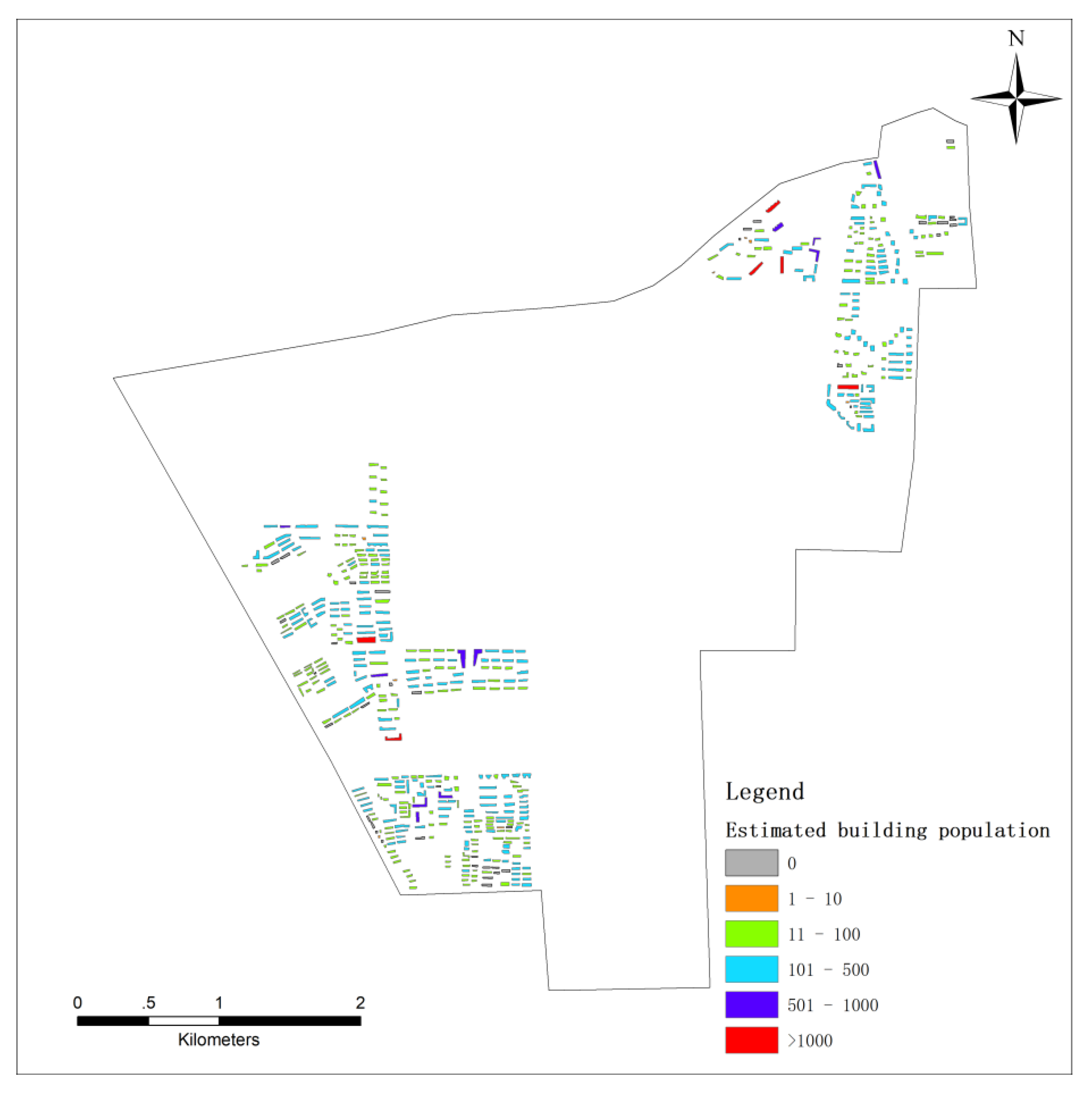
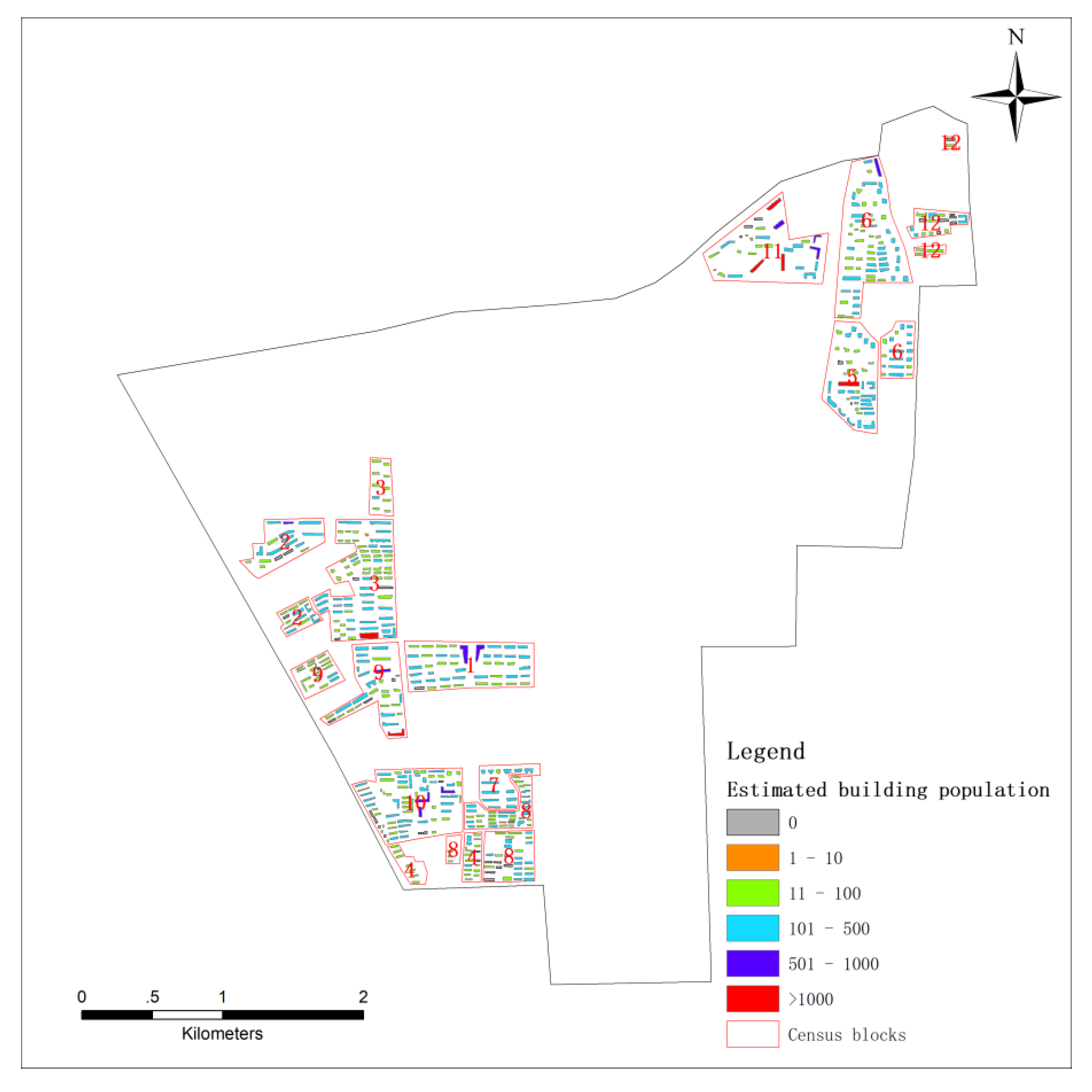
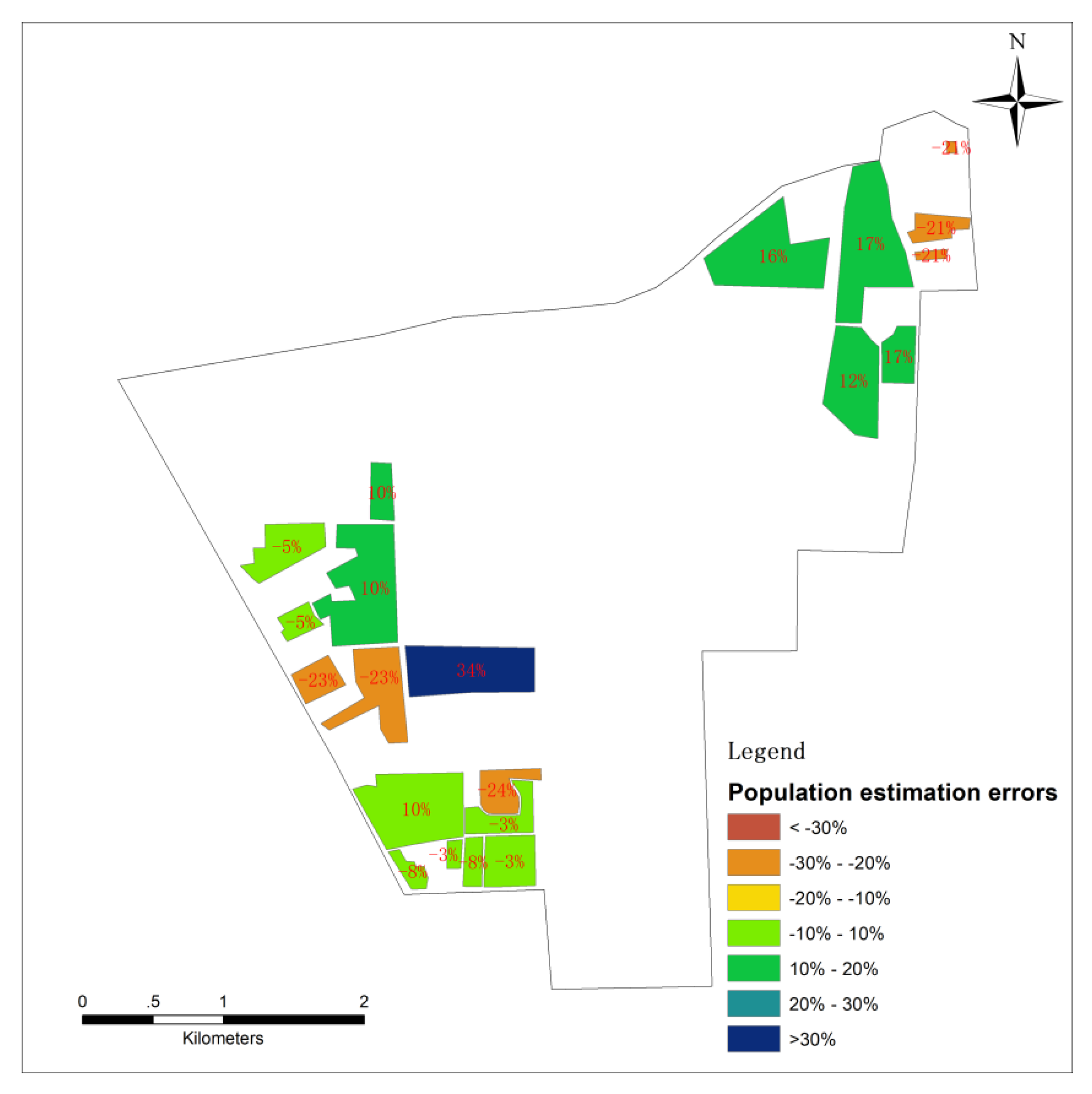
© 2020 by the authors. Licensee MDPI, Basel, Switzerland. This article is an open access article distributed under the terms and conditions of the Creative Commons Attribution (CC BY) license (http://creativecommons.org/licenses/by/4.0/).
Share and Cite
Xu, M.; Cao, C.; Jia, P. Mapping Fine-Scale Urban Spatial Population Distribution Based on High-Resolution Stereo Pair Images, Points of Interest, and Land Cover Data. Remote Sens. 2020, 12, 608. https://doi.org/10.3390/rs12040608
Xu M, Cao C, Jia P. Mapping Fine-Scale Urban Spatial Population Distribution Based on High-Resolution Stereo Pair Images, Points of Interest, and Land Cover Data. Remote Sensing. 2020; 12(4):608. https://doi.org/10.3390/rs12040608
Chicago/Turabian StyleXu, Min, Chunxiang Cao, and Peng Jia. 2020. "Mapping Fine-Scale Urban Spatial Population Distribution Based on High-Resolution Stereo Pair Images, Points of Interest, and Land Cover Data" Remote Sensing 12, no. 4: 608. https://doi.org/10.3390/rs12040608
APA StyleXu, M., Cao, C., & Jia, P. (2020). Mapping Fine-Scale Urban Spatial Population Distribution Based on High-Resolution Stereo Pair Images, Points of Interest, and Land Cover Data. Remote Sensing, 12(4), 608. https://doi.org/10.3390/rs12040608






